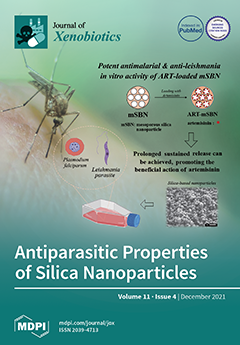With the rise in concern about GMOs and pesticides on human health, we have utilized
Drosophila melanogaster as a model organism for understanding the effects of Roundup-Ready
® GMO diets on health. We recorded dietary behavior during and after exposure to a medium
[...] Read more.
With the rise in concern about GMOs and pesticides on human health, we have utilized
Drosophila melanogaster as a model organism for understanding the effects of Roundup-Ready
® GMO diets on health. We recorded dietary behavior during and after exposure to a medium containing GMO or non-GMO corn, Roundup
® in organic corn medium, and sucrose with or without one of the two Roundup
® formulations. No differences in behavior were observed when
Drosophila were exposed to a medium containing Roundup-Ready
® GMO or non-GMO corn.
Drosophila can detect and refrain from eating sucrose containing one Roundup
® formulation, Ready-to-Use, which contains pelargonic acid in addition to glyphosate as an active ingredient.
Drosophila exhibited dose-dependent increased consumption of sucrose alone after exposure to a medium containing either Roundup
® formulation. This may indicate that flies eating a medium with Roundup
® eat less and were thus hungrier when then given sucrose solution; that a medium with Roundup
® is more difficult to digest; or that a medium with Roundup
® is less nutritious, as would be the case if nutritionally important microbes grew on control medium, but not one containing Roundup
®.
Full article






